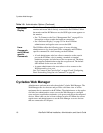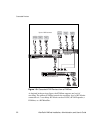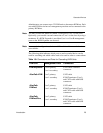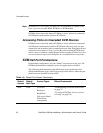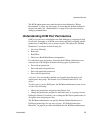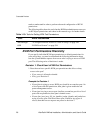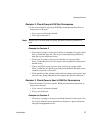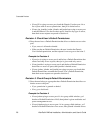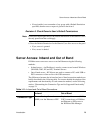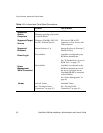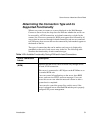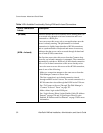Introduction 25
Cascaded Devices
The KVM administrator must take the actions described under “Where
Documented” to allow any other types of access than the defaults defined in
the previous table. See “Authentication” on page 45 for the tasks related to
setting up authentication.
Understanding KVM Port Permissions
KVM port permissions are defined in the Web Manager by assigning Default
Permissions that apply to all KVM ports and by optionally assigning specific
permissions to individual ports or groups of ports. The options for “Default
Permissions” are shown in the following list.
• No access [Default]
• Read only
• Read/Write
• Full access (Read/Write/Power management)
For individual users and groups, if desired, the KVM/net administrator can
construct lists of KVM ports with the following types of permissions:
• Ports with no permission
• Ports with read only permission
• Ports with read/write permission
• Ports with full permission
A Generic User account has a default set of permissions that apply to all
regular users and groups. The Generic User’s Default Permission is “No
access.”
To allow users to access KVM ports, the KVM/net administrator must do one
or both of the following:
• Change the permissions assigned to the Generic User
• Change the permissions assigned to individual users or to groups of users
Editing the Generic User allows you to change the KVM port permissions for
all regular users and groups at once.
The KVM/net administrator can specify different Default Permissions or
KVM port permissions for any user or group. “KVM Port Permissions
Hierarchy” on page 26 provides information that the KVM/net administrator




